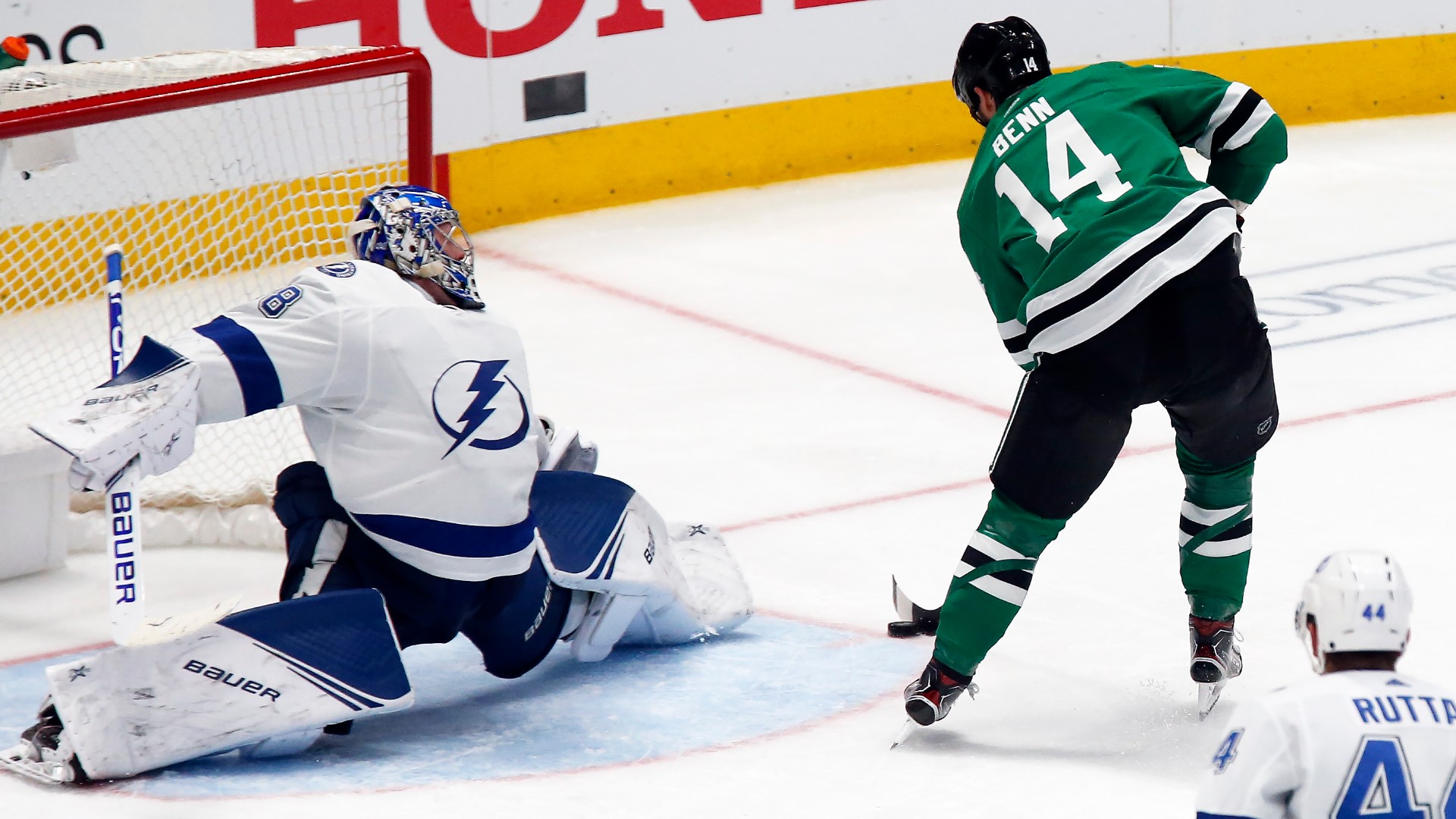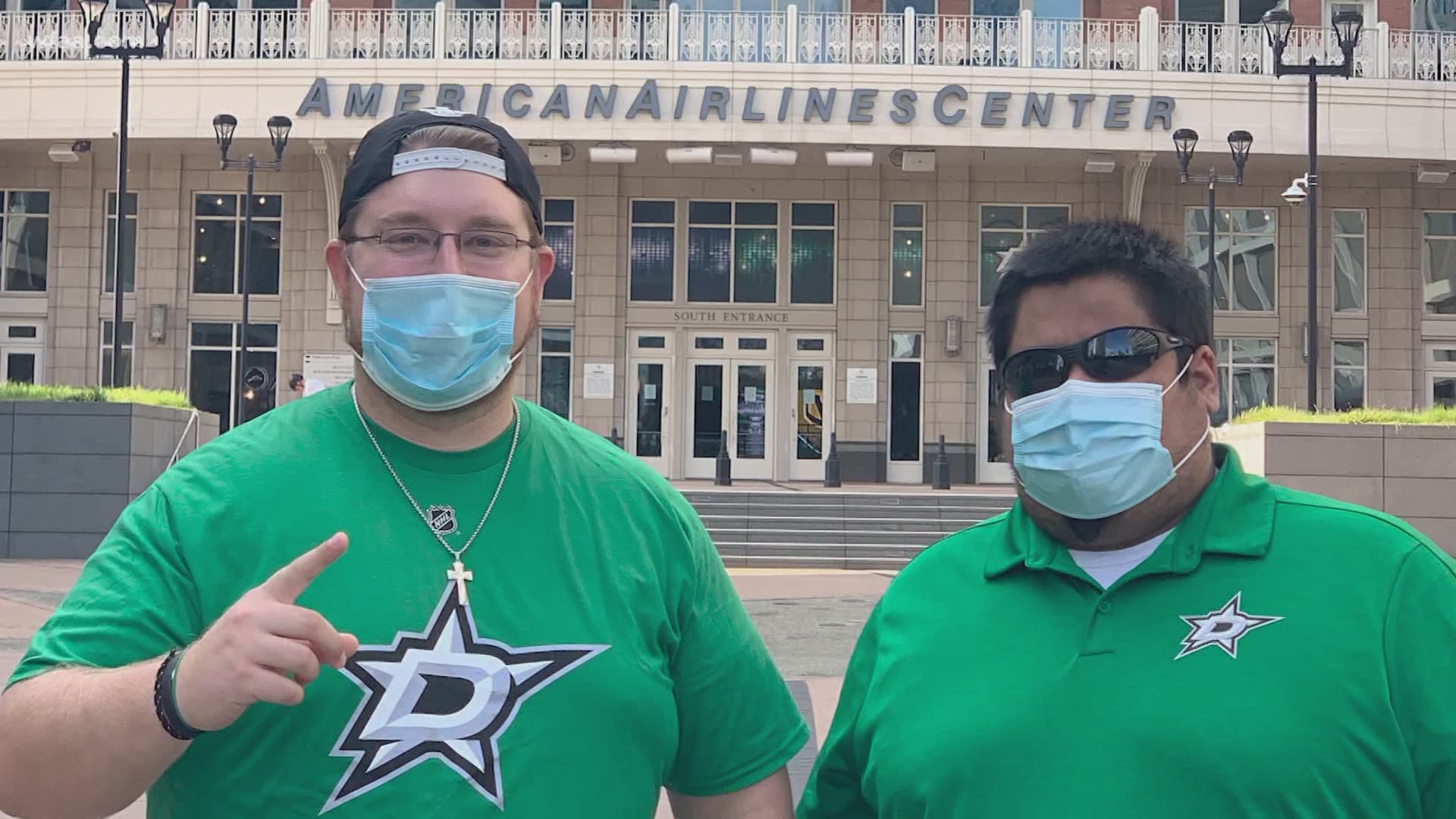DALLAS — There are plenty of non-hockey fans in Dallas excited to support the Stars as they go back to the Stanley Cup Final for the first time since 1999.
The only problem is some might not know the lingo or exactly how the sport works.
This is a Hockey 101 guide to help people better understand how the NHL and the ice hockey works.
What is actually happening?
An NHL hockey game is made up of three periods that are 20 minutes each. The clock only runs when the puck is in play.
Each team has five players and a goalie on the ice. While a sport like soccer keeps the time running when the ball goes out of bounds, hockey is like basketball or football in that the clock stops if the puck is out of play.
The game starts with a faceoff when an official blows his whistle, drops the puck on the ice and the two opposing players try to gain control of it.
If the score is tied after three periods, the teams play in overtime. The first team to score wins.
Since the 2005-06 season, the NHL got rid of tie games in the regular season. So now both regular season games and playoff games must have a winner.
During the regular season, teams play one five-minute overtime period that is 3-on-3. If the game is still tied after five minutes, then a shootout occurs (similar to soccer).
However, in the NHL Playoffs and Stanley Cup Final, things look much different.
Instead, there are no shootouts, no players are taken off the ice and the overtime periods last 20 minutes. Teams continue playing with breaks between overtime periods until one of the teams scores and therefore wins.
Who is on an NHL team?
There are at least 20 active players on an NHL roster with 18 skaters and 2 goalies. However, each team can have up to 23 total players.
The Dallas Stars have nine centers, nine wingers, 11 defensemen and four goaltenders on their roster.
While many of the skaters will be subbed out during the game, goaltenders generally stay in the entire game unless they play poorly.
Each team has a captain and alternate captains denoted by a little letter "C" or "A" on the front of their jerseys. These players can discuss rules and calls with the officials.
Jamie Benn is the Stars captain while John Klingberg, Alexander Radulov and Tyler Seguin are the alternate captains.
Penalties
Most penalties in ice hockey cause the offending player or players to go to a penalty box for a certain amount of time. These athletes can't play until the time is up.
This causes the team who didn't have a player get a penalty to have an advantage on the ice with more players, which is known as a power play.
Minor penalties last two minutes and major penalties last five minutes.
A two-minute minor penalty is usually charged for offenses like tripping, elbowing, high-sticking or delay of game.
Icing? Offside?
Icing in the NHL involves a player hitting the puck all the way across both the center line and the opponent's goal line.
This is mainly in place to prevent players from breaking the flow of the game by shooting the puck up the ice away from their own goal.
When icing is called, the offending team is penalized and consequently has a faceoff back on their own end.
A player is offside if he enters the other team's zone before the puck crosses into that same area. This is similar to the offsides rule in soccer.
The offside rule prevents players from staying on the opponent's side of the ice (or "cherry-picking") and waiting for their team to go on the attack.
The offensive player's skates determine if he is offside.
Why can players fight?
In 1922, the NHL introduced Rule 56, which allows fighting to be regulated by the officials and to cause a penalty rather than an ejection.
Many consider fighting as a way for the players on the ice, the teams involved and the sport overall to "police itself."
If no single player in the fight is considered to be the instigator, both players receive a five-minute penalty while there is no impact on the number of the skaters in the game. Play remains 5-on-5.
NHL referees are trained to handle these types of altercations. They generally will stop play and wait until the fight is over.
How to talk hockey
Just like any professional sport, there is some unique lingo that the people playing, watching and commenting on hockey use.
Here is a list of some of the more common phrases you might hear during the Stanley Cup Final:
Apple: Another term for an assist.
Backhand: A pass or shot when a player uses the backside of the blade of his stick.
Bar Down/Bar Mexico: This is a goal where the puck hits the bottom of the crossbar and goes into the net.
Biscuit: A slang term for the puck.
Celly: A player's celebration after a goal.
Coast to coast: When a player goes from his own net to the opponent's net and scores.
Deke: When a player handles the puck or moves in a way that fools the opponent (similar to a juke).
Enforcer: A player who frequently gets in fights to defend or motivate his teammates.
Five-hole: The area between the goalie’s legs.
Freezing the puck: Trapping the puck in some way to keep it out of play.
Garbage: A reference to the puck when there is a rebound off a shot and then another player scores off the play.
Hands: When a player has good techniques and handles the puck well.
Hat-trick: When a player scores three goals in a game (similar to soccer). Fans commonly throw hats on the ice to celebrate.
Lettuce: Another name for hair, either on the head or as facial hair.
Playoff beard: When players stop shaving during the playoffs until they are eliminated or win the Stanley Cup.
Wraparound: When a player takes the puck around the back of the net and scores on the other side.
Zebra: Alternative term for the referee.


